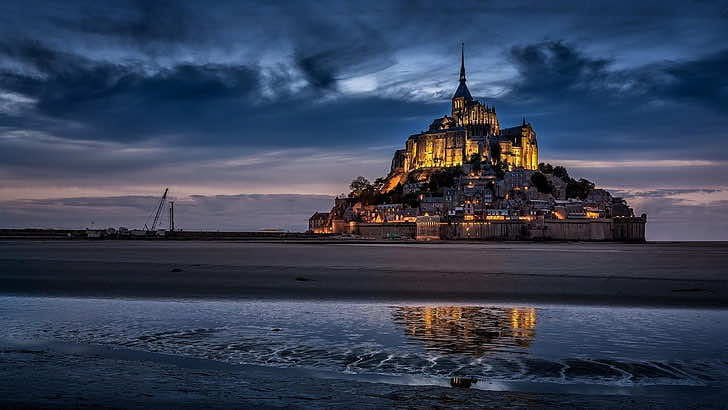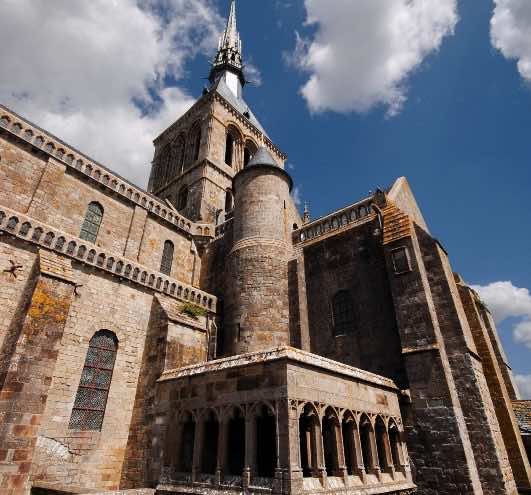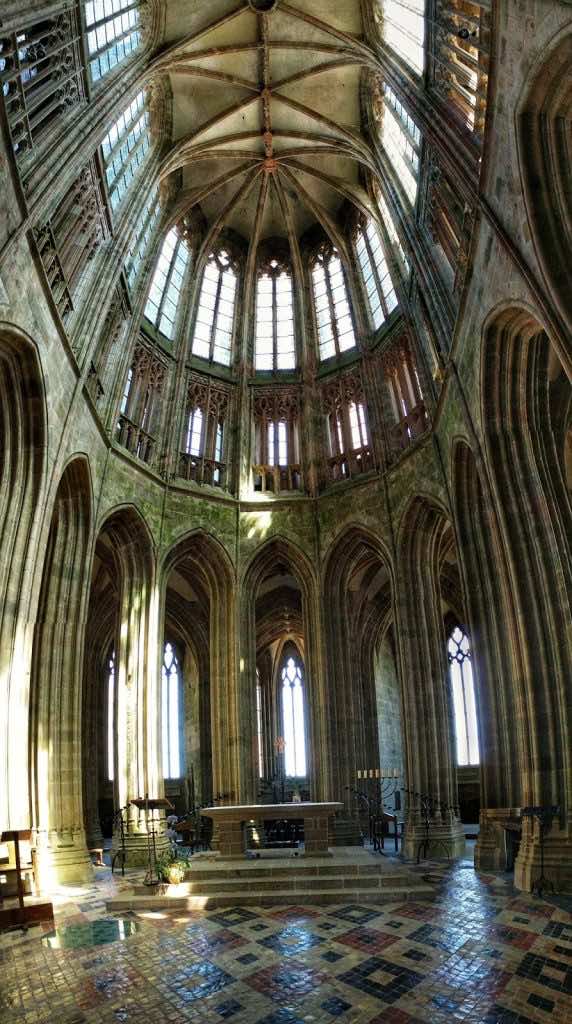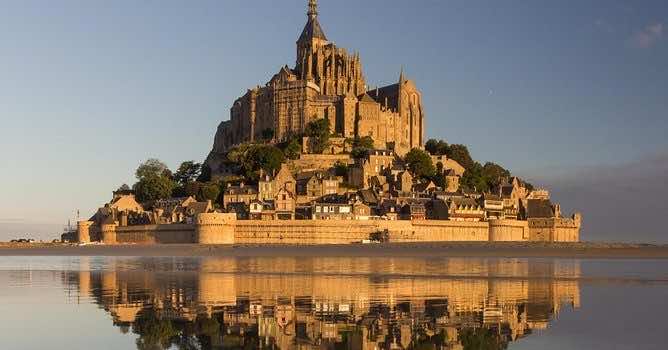Mont-Saint-Michel is a fortified island and castle located off the coast of Normandy, France and is famous for its historical structures including an abbey that houses a church and monastery and the stone fortifications of the island itself. The island has been fortified so well over the years that it remained the only place in Normandy that was never under English rule. Initially known as Mont Tombe, the oldest archaeological records maintain its identity as a religious site beginning in 710 when an oratory to Saint Michael was established there.

This ancient monument offers a diversity of architectural styles, as its construction began in the 10th century, continuing up to the 19th century restorations. The historical, political and economic situation throughout the Middle Ages had considerable influence on the works undertaken and the methods used. Over the centuries and following fires, collapses, reconstructions, changes in use or restorations, the Abbey has been transformed.

The initial abbey grew out of that oratory and developed an architectural identity when Benedictine monks arrived in 966 and added a pre Romanesque church. The decision to build a proper abbey, church and chapel was taken by the Duke of Normandy in 1060. Later in the 11th century, William of Volpiano, the Italian architect who had built Fécamp Abbey in Normandy, was chosen by Richard II, Duke of Normandy, to be the building contractor. He designed the Romanesque church of the abbey, daringly placing the transept crossing at the top of the mount. Many underground crypts and chapels had to be built to compensate for this weight; these formed the basis for the supportive upward structure that can be seen today. In 1421, during a terrifying siege by allies of King Phillip the Romanesque chancel of the church collapsed due to a fire, and was not completely rebuilt until 100 years later. However it was King Phillip himself who financed the reconstruction and this time the architecture was decidedly Gothic and flamboyant.
Later on in its life, the Mont became a prison and the same fortifications that allowed it to be so easily defensible in conflict and sieges made it effective in keeping prisoners in until it was officially named a historic monument in the mid 19th century and since then has hosted a large number of pilgrims and tourists.



